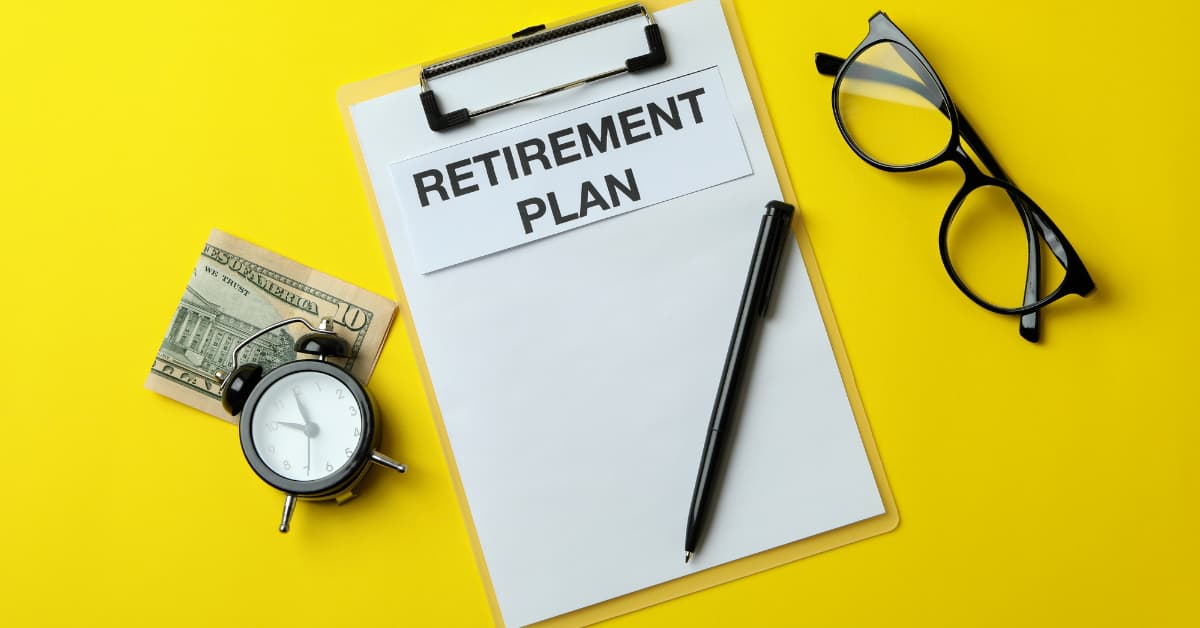You’ve worked hard your whole life, saving diligently for retirement. But did you know that hidden risks lurk in the shadows, ready to take a bite from your hard-earned nest egg? It’s true! And I’m not just talking about the usual suspects like market crashes or inflation.
Unique risk to retirement income can catch even the most prepared retiree off guard, leaving you scratching your head and wondering where your hard-earned money disappeared. But fear not! In this post, we’ll uncover the unique risks to retirement income and help equip you with the knowledge in an effort to help during your retirement years.
Navigating the Waters of Retirement Income Planning
Retirement income planning. There maybe risks lurking beneath the surface, ready to capsize your retirement savings if you’re not careful. That’s why it’s crucial to have a solid plan in place to help protect your nest egg against potential threats. In this post, we’ll explore some key risks that retirees face and the strategies to implement to help mitigate those risks. By the end, our goal is to provide you with a road map to help you with your retirement savings. So grab your fictitious life jacket and set sail on this journey in finances during your golden years.
Understanding Sequence of Return Risk
Picture this: you’ve saved diligently for retirement, building a nice nest egg over the years. But then, just as you’re about to retire, the market takes a nosedive. Suddenly, your portfolio could be worth less than you originally thought. This, my friend, is a sequence of return risk in action. It highlights the impact of the order of investment returns during retirement. A few bad years early on can deplete your savings faster than anticipated, leaving you with less money to last the rest of your life. So, what can you do to mitigate this risk? One strategy is to adjust your asset allocation as you near retirement. By shifting more of your portfolio into less volatile investments like bonds, CDs, and Money Market Funds, the goal is to reduce the impact of market downturns on your savings. Some people like to think of that as a bucket strategy, where one of the buckets is several years’ worth of expenses in cash or short-term investments. This way, the goal is to ride out market ups and downs and hopefully not have to sell assets at a loss.
The Reality of Longevity Risk
We’re living longer than ever, so our retirement savings must stretch further. The average life expectancy for men in their 60s is around 82-83, and for women, it’s around 84-87. That’s a long time to make your money last. Longevity risk is the possibility that you’ll outlive your assets, potentially leaving you struggling to make ends meet in your later years. To help you plan for this, you need to plan for a longer retirement than you might think. We encourage you to speak with a holistic investment advisor who can help prepare you for a long retirement with the goal of reducing or minimizing financial uncertainties. One way to do this is by delaying Social Security benefits. For every year you wait past your full retirement age (up to age 70), your monthly benefit increases by 8%. This can provide a valuable source of income later in life.
Tax Risk and Retirement Income
Taxes are one of life’s certainties, and they don’t stop when you retire. In fact, changes in tax rates throughout retirement can have a significant impact on your income. That’s why it’s crucial to plan for future tax scenarios. One strategy is to diversify your retirement accounts. By having a mix of traditional and Roth accounts, you can prepare for future tax rate changes. With a traditional IRA or 401(k), there may be tax benefits on initial deposits, but pay taxes on withdrawals in retirement. It’s important to understand that funds must not be withdrawn within 5 years, or the funds may be taxable. With a Roth, you pay taxes upfront on the initial deposits but enjoy tax-free withdrawals later. Another consideration is how you’ll withdraw from your accounts. Keep in mind that we believe the optimal strategy in any given year can be different than the last, depending on the specifics of your situation.
Managing Volatile Retirement Expenses
Retirement expenses can be unpredictable, especially when it comes to healthcare costs. Even with Medicare coverage, out-of-pocket expenses can add up quickly. A recent study estimates that the average retired couple may need $300,000 saved just for medical expenses. It’s essential to have a comprehensive retirement income plan to budget for these uncertainties. This should include a realistic estimate of all your expenses, including healthcare costs. Consider long-term care insurance, which can help cover the cost of assisted living or nursing home care. Another strategy is to build flexibility into your budget. The goal is to avoid derailing your entire retirement plan by having a cushion for unexpected expenses.
Crafting a Durable Retirement Savings Strategy
Now that we’ve covered some key risks to watch out for let’s highlight potential solutions that could affect your retirement savings. The goal is to create a diversified, flexible strategy that attempts to balance growth and stability—one that is built to help you achieve your financial goals and understand how market volatility can affect those goals.
The Importance of Asset Allocation
Asset allocation is about spreading your investments across different asset classes, like stocks, bonds, real estate, and cash. The idea is that when one type of investment is down, another might be less volatile and possibly increase in value, helping to smooth out returns over time. Think of it like a balanced meal. You wouldn’t want to eat just one food group, right? The same goes for your portfolio. By diversifying, the goal is to reduce risk and potentially improve long-term performance. We believe the key is to find the right mix for your goals and risk tolerance. Generally, the closer you are to retirement, the more you’ll want to shift toward conservative investments like bonds. But even in retirement, it’s important to, if appropriate for your risk tolerance, keep some growth investments, to help combat inflation.
Sustainable Withdrawal Rates
Once you’ve built up your retirement savings, the next question is how to determine how much you can safely withdraw each year with the goal of staying financially comfortable. This is where sustainable withdrawal rates come in. The oft-cited “4% rule” suggests that you can withdraw 4% of your portfolio in the first year of retirement and adjust that amount for inflation each year. So hypothetically, if you have a $1 million portfolio, you could take out $40,000 in year one. Then $42,000 the next year if inflation for that year was 5%. But this is just a general guideline, and your actual sustainable withdrawal rate will depend on factors like age, expected longevity, and risk tolerance. It’s important to run the numbers with a financial advisor to determine what’s right for you. Consider using a dynamic withdrawal strategy to adjust your withdrawals based on market performance. For example, taking out less during down years and more during up years. Hypothetically this may look like taking 4% every year of the current balance rather than 4% in year one and adjusting the withdrawals upward each year.
Preparing for Healthcare Costs in Retirement
Healthcare costs are one of retirees’ most significant expenses, and they’re only going up. In fact, a recent study found that the average 65-year-old couple retiring in 2021 may need approximately $300,000 saved to cover healthcare expenses in retirement. And that doesn’t even include long-term care costs. So how can you prepare for these expenses and keep them from derailing your retirement plans?
Estimating Future HealthCare Expenses
The first step is to get a realistic estimate of your healthcare costs in retirement. This will depend on factors like your age, health status, and coverage choices. Medicare is a great starting point, but it doesn’t cover everything. You’ll likely need supplemental insurance, like a Medigap policy or Medicare Advantage plan, to fill in the gaps. And don’t forget about dental, vision, and hearing expenses, which traditional Medicare doesn’t cover. To get a ballpark estimate of your costs, check out online healthcare calculators. https://communications.fidelity.com/wi/tools/retirement-health-care/
But remember, these are just estimates. Your actual costs may be higher or lower depending on your individual situation.
Long-Term Care Planning
Another major healthcare expense that we haven’t yet accounted for is long-term care. This includes services like assisted living, nursing home care, and home health aides. And it’s not cheap. The median cost of a private room in a nursing home is over $100,000 per year, according to Genworth’s 2020 Cost of Care Survey. Medicare doesn’t cover most long-term care expenses, so it’s essential to have a plan in place. One option is long-term care insurance, which can help cover the costs of care if you need it. However, these policies can be expensive, and not everyone will qualify. Another option is to self-insure by setting aside money for long-term care expenses. This could be in a dedicated savings account or a health savings account (HSA) if you have a high-deductible health plan.
Budgeting for Out-of-Pocket Costs
Even with Medicare and supplemental insurance, you’ll likely have some out-of-pocket healthcare costs in retirement. These could include things like deductibles, copays, and prescription drug costs. To budget for these expenses, it’s essential to clearly understand your coverage and what you’ll be responsible for paying. Review your Medicare and supplemental insurance policies carefully, and don’t be afraid to ask Medicare questions directly if something isn’t clear. There are also private Medicare professionals who can help you navigate some of the decisions. Consider setting up a dedicated healthcare emergency fund to cover unexpected expenses. Aim to save at least a few months’ worth of estimated costs, and keep this money separate from your other retirement savings. Planning ahead and budgeting for healthcare costs can help so that those expenses don’t derail your retirement plans. It’s not always easy, but the goal with retirement is with a bit of preparation and foresight, you can enter retirement with confidence, knowing you have identified potential risks, and put a plan in place to mitigate them.
Key Takeaway:
Retirement planning isn’t just saving; it’s being aware of risks like market downturns, outliving your savings, and unexpected costs. With the goal of keeping your retirement on track, use smart tactics like adjusting asset allocation, delaying Social Security benefits, and preparing for healthcare expenses.
Conclusion
Risk is inevitable. Navigating those risks with a well-designed plan can help keep your golden years golden. We hope you feel a little more prepared and confident heading into this next chapter of your life.
Diversifying your investments is a must. Are you planning for a longer life? Absolutely essential. And don’t forget to budget for those unexpected costs that always seem to pop up. Take these precautions, and our hope is that you’ll be on your way to having peace of mind in retirement.
So take a deep breath, put these strategies into action, and be proud of your forward-thinking. Your future self will thank you! If any of this feels stressful or overwhelming, please reach out to us with questions. our hope is that you’ll be on your way to a peaceful retirement. Click Here to Set up a Free Consultation Call with One of our Holistic Fiduciary Advisors.








